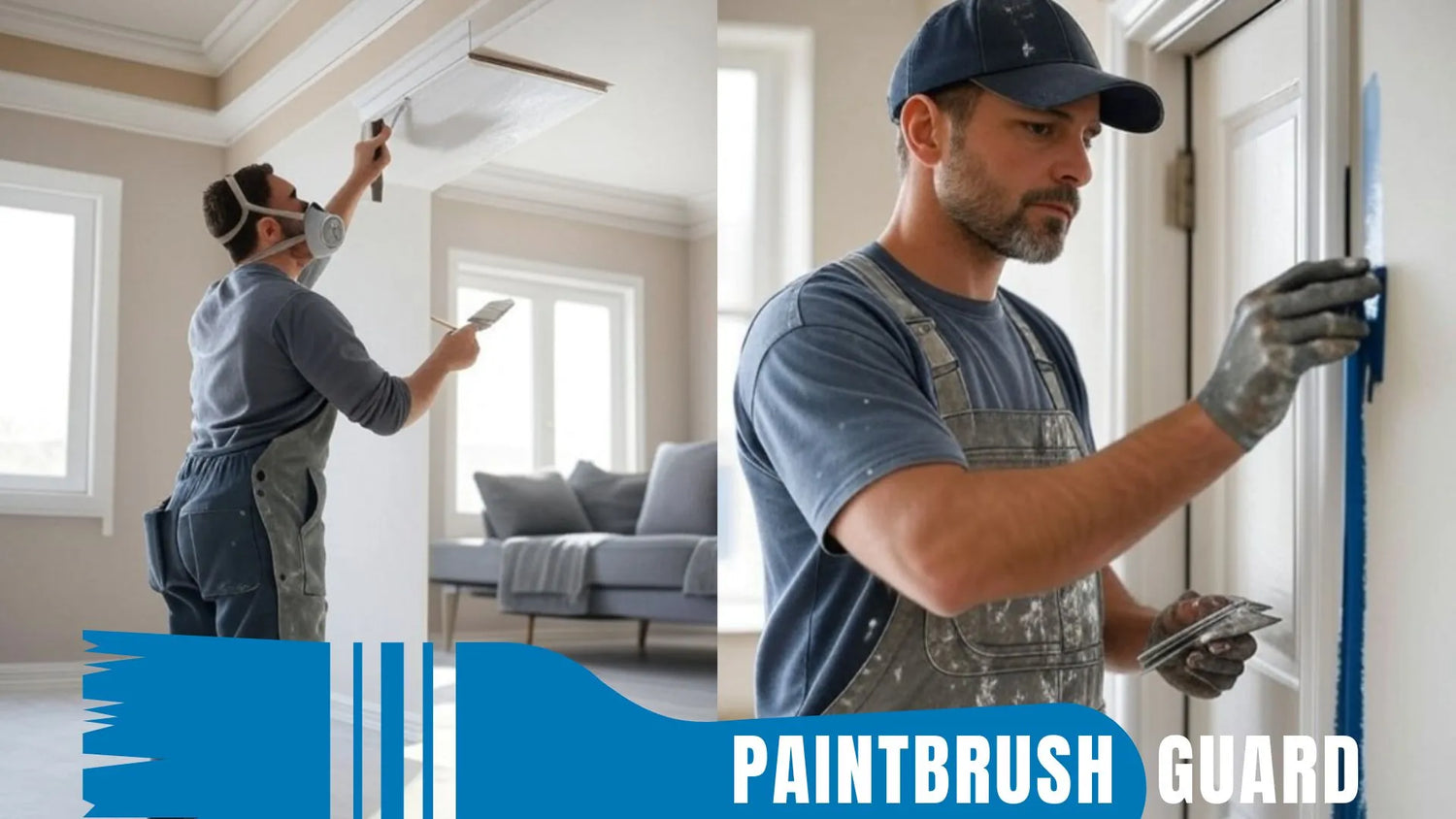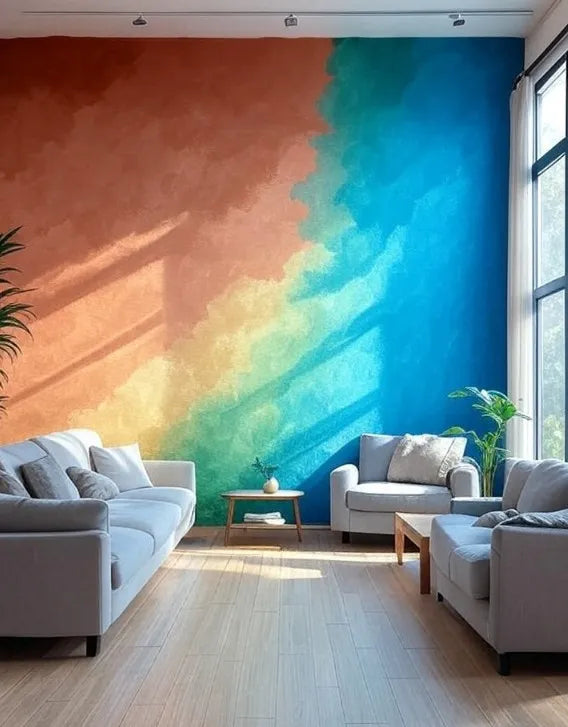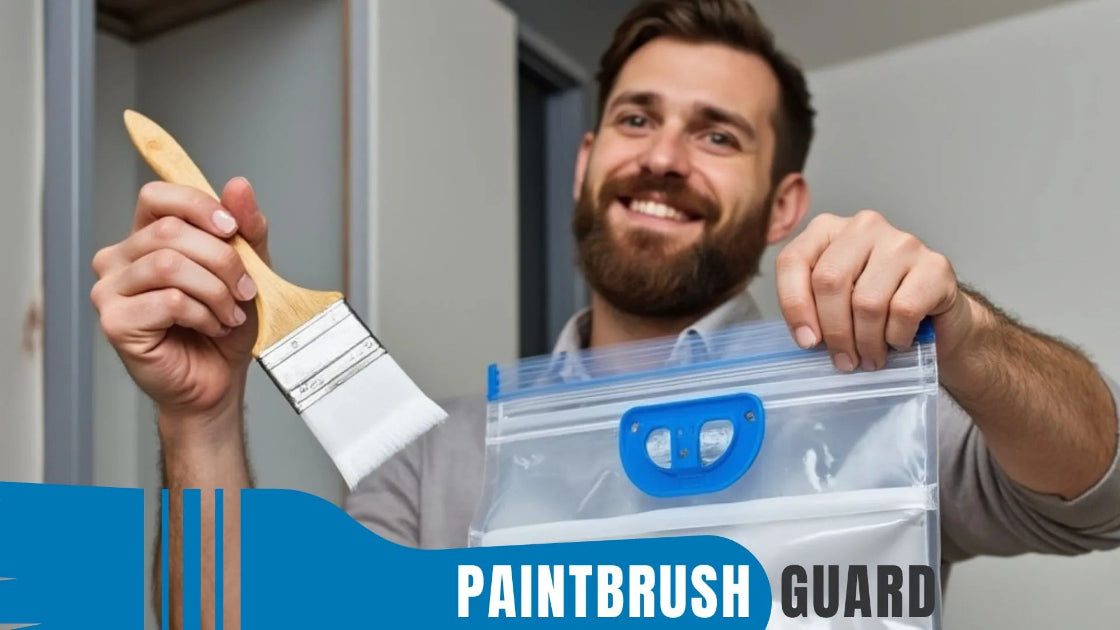
Moisture Resistant Paint: How to Paint Bathrooms and Kitchens with Expert Tips, Grease Removal and Ventilation
|
Time to read 9 min
|
Time to read 9 min
Painting your bathroom or kitchen can breathe new life into these high-traffic spaces, but they're not like any other room in your home. Constant exposure to steam, splashes, humidity, and cooking grease demands a strategic approach. Skip the shortcuts, and you'll end up with peeling paint, mold growth, or sticky residues that ruin your fresh look in months.
In this expert guide, we'll cover everything from selecting moisture-resistant paints that stand up to daily abuse to foolproof grease removal techniques for kitchens and smart ventilation tips that keep your walls pristine longer. Whether you're a DIY newbie or a seasoned renovator, these steps will help you achieve a professional finish that lasts.
If you are planning to paint your house interior, in this article you will learn easy steps to make your home interior feel new again with step-by-step guides for all interior surfaces.
Bathrooms battle relentless humidity from showers and baths, leading to condensation, mildew, and bubbling paint if not addressed. Kitchens, meanwhile, face greasy splatters from frying, baking, and boiling that cling to surfaces and sabotage adhesion.
- Both areas amplify common painting pitfalls: poor prep leads to 70% of failures, according to industry pros.
The good news? With the right moisture-resistant paints, thorough cleaning, and proactive ventilation, you can create durable, easy-to-maintain finishes. Expect to invest in quality tools and materials because it's cheaper than repainting every year.
Pro tip: Always work in well-ventilated areas to avoid inhaling fumes, and wear gloves, goggles, and a mask for safety.
Tools you'll need: TSP cleaner, bleach, sponges, drop cloths, painter's tape, primer, and a ladder for ceilings.
Painting interior walls? Our 10-step beginner guide with product recommendations ensures a flawless, professional finish for any room.
Kitchens are grease magnets, especially above stoves or islands. Built-up oils create a slick barrier that repels even the best paints, leading to chipping and uneven coats. The key? Degrease aggressively without damaging surfaces.
After degreasing, wipe down with a microfiber cloth and let air dry. Prime with a stain-blocking formula to lock in any lingering odors or residues.
Bonus: This prep also preps for backsplashes; extend coverage there for a seamless look.
Essential tools: Degreaser spray bottle, baking soda, sponges, vinegar, and high-quality primer.
Not all paints are created equal. Opt for formulas labeled "bathroom and kitchen" with built-in mildew inhibitors. These contain fungicides that prevent growth on the paint film itself.
Finish Type |
Best For |
Pros |
Cons |
Satin |
Walls in both rooms |
Subtle sheen, scrubbable, hides imperfections |
Slightly less moisture-repellent than gloss |
Semi-Gloss |
Bathrooms (high humidity), kitchen trims |
Excellent water resistance, easy to wipe clean |
Shows brush marks if not applied evenly |
High-Gloss |
Kitchen cabinets, doors |
Ultra-durable against splashes and grease |
Reflective; can highlight wall flaws |
Eco-tip: Look for low-VOC options to minimize fumes in enclosed spaces. Budget $40-60 per gallon for premium formulas, they cover better and last 5+ years.
Even the toughest moisture-resistant paint can't fight poor airflow alone. Stagnant air traps humidity, accelerating wear. Integrate ventilation from prep through post-paint.
Discover how house paint colors influence mood & get expert tips on choosing the best colors for every room to create a vibrant, harmonious home environment.
With prep done, it's showtime. Work top-to-bottom to catch drips.
Pro hack: Thin paint slightly with water (for latex) for smoother application in humid conditions.
Steer clear, and your project will shine.
With no cleanup required after a painting session, you can take a short break mid-project or wrap up your painting for the day, your brush stays ready without the need to clean.
Mastering how to paint bathrooms and kitchens boils down to smart preparation like thorough grease removal and mold treatment paired with moisture-resistant paints and rock-solid ventilation.
- Follow these expert tips, and you'll enjoy vibrant, durable results that withstand the chaos of daily life.
Ready to start? Grab your supplies and transform one room at a time.
Have questions? Drop them in the comments, we're here to help your project succeed. Happy painting!
For high-humidity spots like bathrooms, opt for semi-gloss or satin finishes with built-in mildew inhibitors. These repel moisture and wipe clean easily. In kitchens, satin works for walls to hide minor imperfections, while semi-gloss shines on splash zones to fight grease. Always choose low-VOC formulas for better indoor air quality.
Yes—priming is essential for adhesion, especially over glossy surfaces, stains, or bare drywall. Use a mold-resistant primer in bathrooms to block humidity, or a stain-blocking one in kitchens to seal grease residues. Skip it only for minor touch-ups with self-priming paints, but pros recommend it 90% of the time to prevent peeling.
Start with a degreaser like a Dawn dish soap solution (warm water + a few drops) for light buildup—spray, let sit 10 minutes, scrub with a non-abrasive sponge, and rinse. For stubborn spots, whip up a baking soda paste (3:1 with water), scrub, then hit with a 1:1 vinegar-water spray. Always test in a hidden spot, dry thoroughly, and follow with TSP for pro-level clean. This ensures paint sticks without bubbling.
Clear the room, then deep-clean with a TSP-water mix (1:4 ratio) to zap soap scum and minerals—scrub grout lines and rinse well. Treat mold with a 1:10 bleach solution (let sit 10 minutes, scrub, rinse), but never paint over active growth. Repair cracks with spackle, sand smooth, and prime. Allow 24 hours to dry in humid conditions to avoid trapping moisture.
Crucial—poor airflow traps fumes during painting and humidity afterward, leading to bubbles, slow drying, and mold. Open windows, use fans, and run exhausts 20-30 minutes post-shower or cooking. Upgrade to 50-100 CFM fans for better results. It extends paint life by up to 50% and keeps your space fresh.
Touch-dry in 1-2 hours for latex paints, but wait 4-6 hours between coats and 24 hours before light use. Full cure takes 7-30 days—avoid scrubbing for two weeks. High humidity slows this, so ventilate well. Oil-based options dry slower but are tougher in steamy areas.
Over old paint: Yes, if it's sound—sand glossy spots, clean, and prime. For wallpaper: Remove it to avoid peeling in humid conditions; painting over invites quick failure. If stripping damages walls, repair and prime heavily. Always use moisture-resistant topcoats.
Light neutrals like soft whites, grays, or beiges brighten small spaces and hide water spots. For kitchens, earthy tones (greens, blues) add warmth without showing grease. Monochrome schemes feel clean and timeless. Test in your lighting—humidity can alter shades.
Every 3-5 years in high-use areas, depending on traffic and maintenance. Quality moisture-resistant paints last longer; watch for fading, chipping, or mold as signs. Good ventilation and wiping splatters extend life—repaint sooner if you notice bubbling from leaks.
Discover how to store leftover paint properly. Guides for latex and oil-based paints, storage hacks, revival methods, and eco-friendly disposal.

Learn about eco-friendly painting, tips and tutorials on house interior and exterior surfaces, so you can get started with your project without any surprices during or after your painting.

Learn how interior house paint colors influence mood with expert tips on room preference so you can pick the best colors for a harmonious home environment.
We focus on the most popular shades for each interior colors, so you don't miss no matter what color you pick.

Learn how this innovative tool allows you to store paintbrushes without the need for immediate cleaning, offering significant advantages in time savings, water conservation, reduced chemical pollution, and lower costs for supplies.





